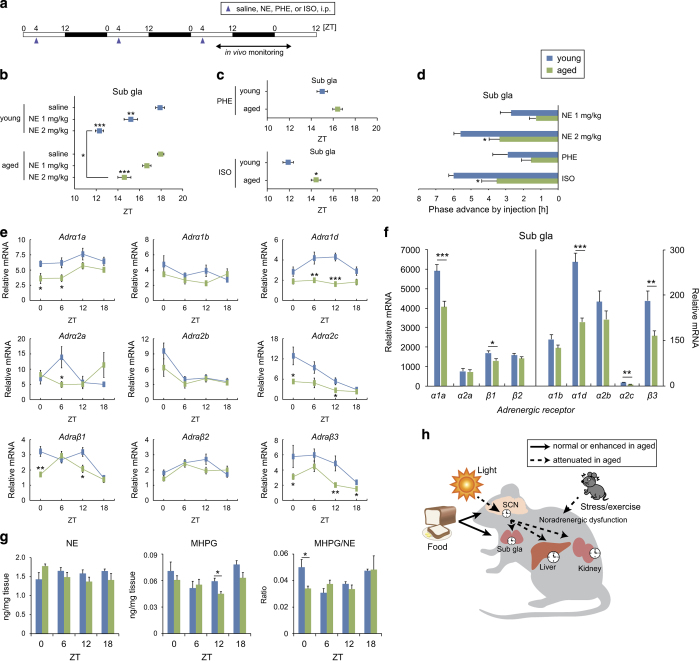Figure 6.
Age-related changes in sympathetic regulation of the submandibular gland. (a) Experimental schedule of adrenergic receptor stimulation. Saline (vehicle), norepinephrine (NE), an α-adrenergic receptor agonist (phenylephrine; PHE), and a β-adrenergic receptor agonist (isoproterenol; ISO) were administered intraperitoneally (i.p.) on a daily basis. White and black bars indicate the light and dark periods, respectively. ZT, zeitgeber time. (b–d) Peak phase (b, c) and phase change values (d) of PER2::LUC bioluminescence in the submandibular gland in each condition. Phase advance values were calculated as the difference between the peak times of each drug group and the saline group. The number of mice used is indicated in Supplementary Table S1. (e, f) mRNA expression rhythms (e) and total daily mRNA expression (f, average of 4 time points) for each adrenergic receptor subtype in the submandibular gland (n=6). (g) Tissue contents of NE and its metabolite 3-methoxy-4-hydroxyphenylglycol (MHPG), and MHPG/NE ratios in the submandibular gland at ZT0, 6, 12, and 18 (n=4). Values are expressed as the mean+/±s.e.m. *P<0.05, **P<0.01, ***P<0.001 versus the young group or the saline group (Student’s t-test, Mann–Whitney test, or one-way analysis of variance (ANOVA) with Dunnett’s post hoc tests). (h) Model of age-related changes in the regulation of peripheral circadian clocks.

